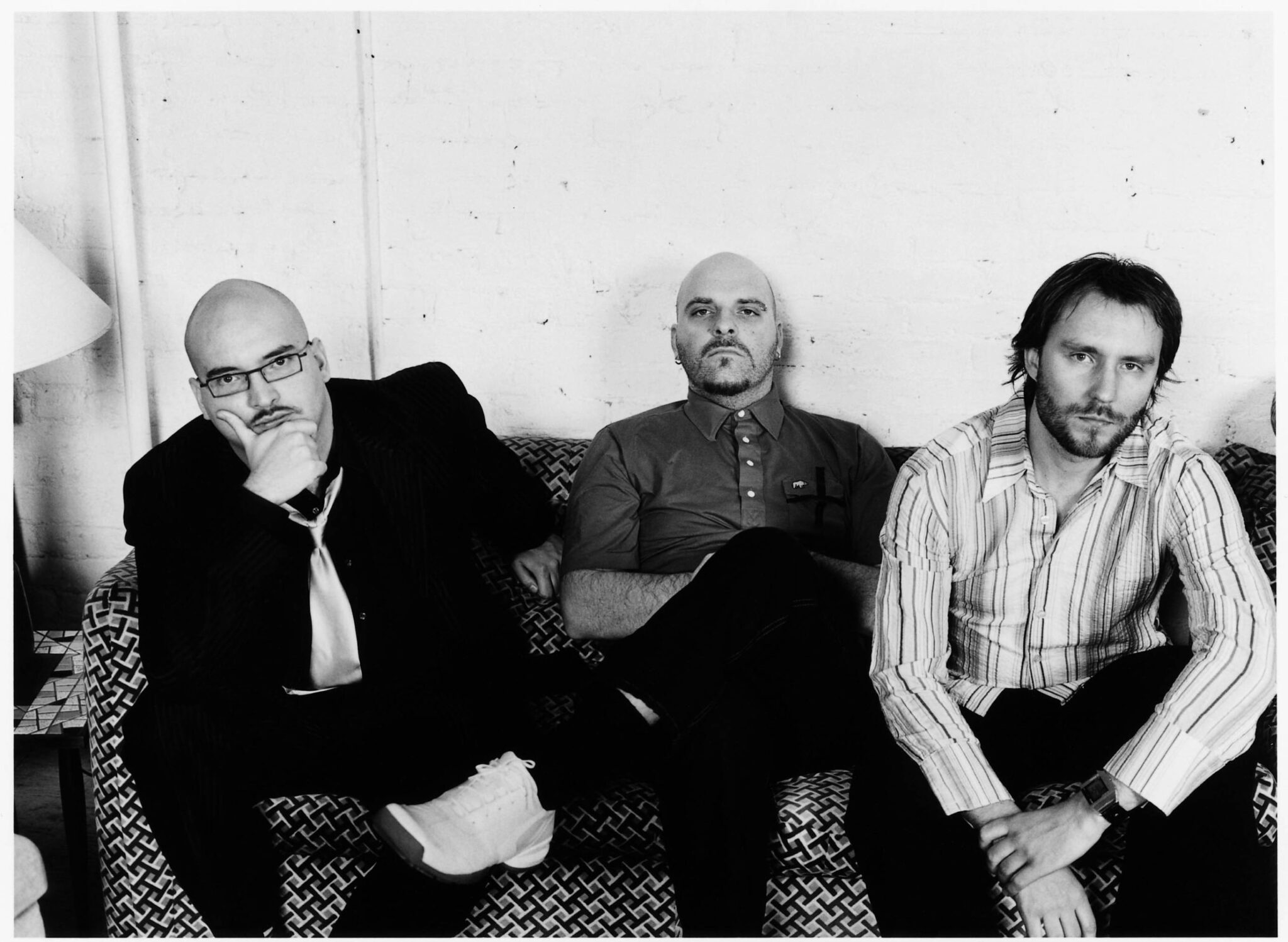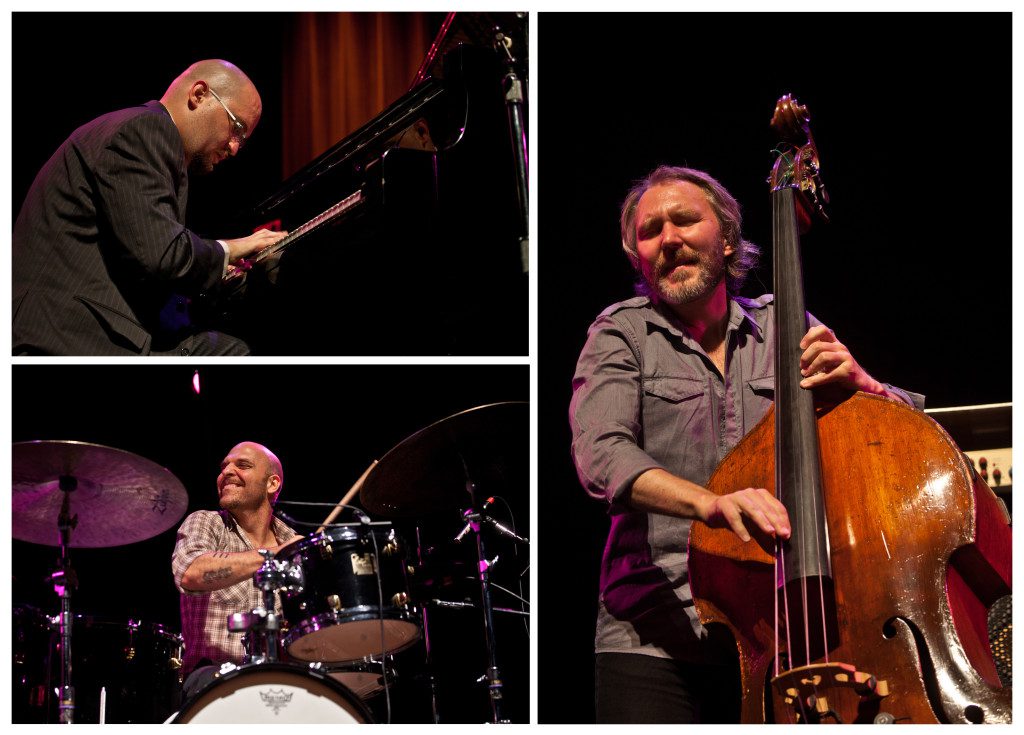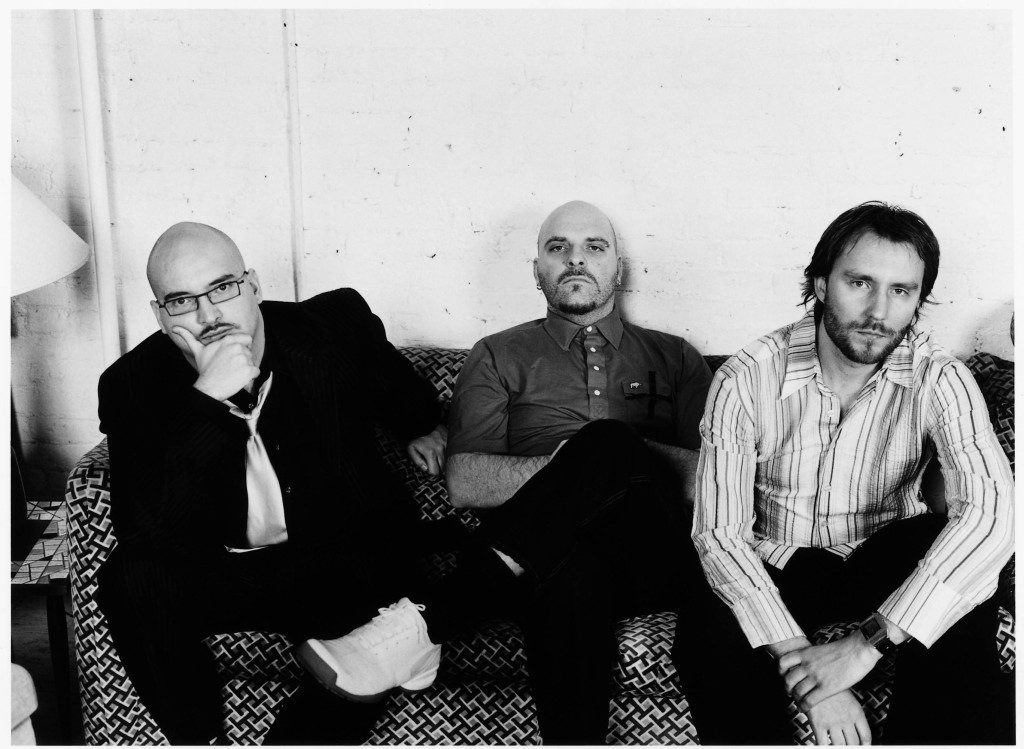
If anyone can adapt the freedom and spontaneity of Stravinsky’s music it’s The Bad Plus. This New York-based avant-garde jazz trio is known for taking songs – often pop songs, even – and breaking them out of their mold. Bassist Reid Anderson, pianist Ethan Iverson, and drummer David King handle rhythm and experimentation masterfully. They’ve performed The Rite of Spring at Duke University and toured the United States, Ireland, Israel, Canada, and Norway. This incredibly focused album marks their ninth studio recording. I’m a big fan of the Bad Plus and this may be one of the best things I’ve ever heard from them. It’s certainly the most engaging, just in terms of the evident dedication and focus to a concept and theme. The music explores spring on Earth, in all of its wonder and terror. It paints a vivid portrait of nature, including humanity, in a kind of mystical way.
The album is split into two parts: “Adoration of the Earth” and “Sacrifice”. The “Adoration” songs are more elemental and natural, while the “Sacrifice” songs seem to introduce people into the world Stravinsky (and the Bad Plus) have created.
“Adoration” opens with a beautiful track that feels like water, like drowning. It has a certain ambience and piano tapping that is a Bad Plus staple. The opening solo is built on a higher melody tempered by low, almost ominous notes. There’s so much movement the music appears to be jumping, very fleeting, in front of the listener. In the middle of the song there are some sudden breaths, a gasping which heightens the sense of panic and foreshadows the introduction of a more human element. There’s a sense of chaos and disaster, but also incredible beauty in its final soothing moments, like water dancing.
The second track in this section, “The Augurs of Spring” is more heavy, with a pounding drum and piano sound, but never harsh. As the title implies some story of spring is evident here. When the bass comes in, it provides some comfort against the dissonance of the drums and piano. The melody is constantly on the move, again, and it’s hard to pin it down except in certain sections, but it’s propelling, hard to escape. This song also has a sense of breathlessness, but feels more like the flora, the flowers and trees, than the water. With so much of Bad Plus’ material, the epic combination of music and story can verge on overwhelming. Moving and imaginative, it is ideally listened to while alone and in a comfortable space.
There are flowers dancing haphazardly in the wind in “Ritual of Abduction”. The rhythm is addictive for this short piece, the piano and drums coming together towards the end with so much atmosphere – quick jumps from high to low, slamming on the cymbals. The final song in this section “The Sage/Dance of the Earth” is a soft transition song. The listener will hear it move into a more jazzy space, something you can tap your fingers to. In most jazz the drums and the bass have a way of really listening to and working with each other. Here , the dynamics hinge on that interconnectedness; sometimes the bass follows the piano, sometimes the drums, and all of the instruments are used beyond their typical roles – bass can be melodic, piano rhythmic, and so on. It’s refreshing and lively.

“Sacrifice” continues in a slower, but not softer direction. Its songs take on a magical tone, beginning to feel like something you might hear at a Druidic celebration or Pagan ritual, and titles like “Mystic Circle of the Young Girls” notable for its pulsating bass melody and cyclical, repetitive qualities. Overall the second part is more dramatic and performative than “Adoration” with stronger bass to guide the listener through dramatic piano. The drums grow softer, at least in the first few songs, appearing simply as sweeping brushes.
I like the directness of the song titles in “The Sacrifice”. The final song “Sacrificial Dance” is immediately recognizable as a dance, the way “Dance of the Earth” was, though it may not have you shaking your hips in the expected manner. The rhythm is heavy and once again I imagine plants, people, the air dancing in a circle which continues the ritualistic aspect. As the listener we don’t really know what we’re sacrificing, just that we’re a part of it. This “unknown” is thrilling. The drums are also fantastic and engaging in this piece, though each instrument seems to have its own stand-out song.
The Bad Plus have really created something freeing and immersive with this adaptation. Listen to them perform The Rite of Spring below:


